Writing article is always interesting and requires highly specialized skills. With the advent of internet and search engines, you also need to consider SEO when writing for blogs. Writing good SEO friendly articles can also get your article indexed fast.

Expressing thoughts verbally is easy but writing in a way, that easily understood is quite difficult.
Writing on websites or blogs requires more skills than writing on paper.
You have to consider two aspects when you are writing blog posts: Readers (human) and Search Engines (bots).
The Human Aspect of The Content
- The quality of content: Same like products and services, quality in a blog post is also critical. Quality will bring your readers back.
- Relevant Content: Relevancy is important because only relevant readers will read your article.
- Organic Content: Original content increases readership. Readers like new information in new style.
For Internet bots, read the full article as this article is specifically focused on the tips to write posts which are visible to Internet bots.
Characteristics of an SEO Friendly Blog Post/article
Two ways available on the internet to reach your readers: first send them a direct link to the article or optimized post to place it in top ten search results, which is called Search Engine Optimization.
We are discussing here how to write SEO Friendly Blog Post or in easy wording, search engine friendly post.
The more readers read your post, the more search engine will rank high in search results.
8 rules you should follow to write blog post SEO friendly:
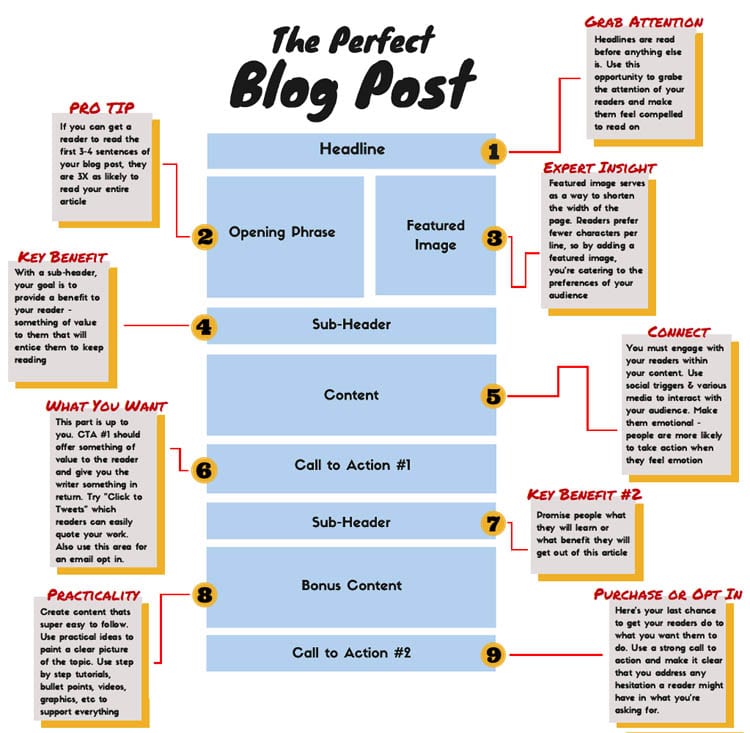
How to Write SEO Friendly Article?
Think Before You Write (Research)
Very first rule of writing is research. You have decided the topic. Now research your topic as more as you can.
The research will give you broader view about the topic.
You will be able to generate quality content. Once you have quality content, readers will likely to read more and eventually search engine will rank your link high in search results.
- Research keywords, which you will use in an article.
- Research important information related to the topic.
- Research facts and figures related to your topic.
- Research and include appropriate and optimized images
Keywords
The keyword is the most significant aspect of blog post writing.
After deciding blog post topic, next thing to focus is keyword selection.
Use keyword research tool to analyze that which keyword is most searched and relevant to the topic.
Google Keyword Planner is the best free tool for this purpose, which allows the writer to know that which keyword has most search rate as well as competition.
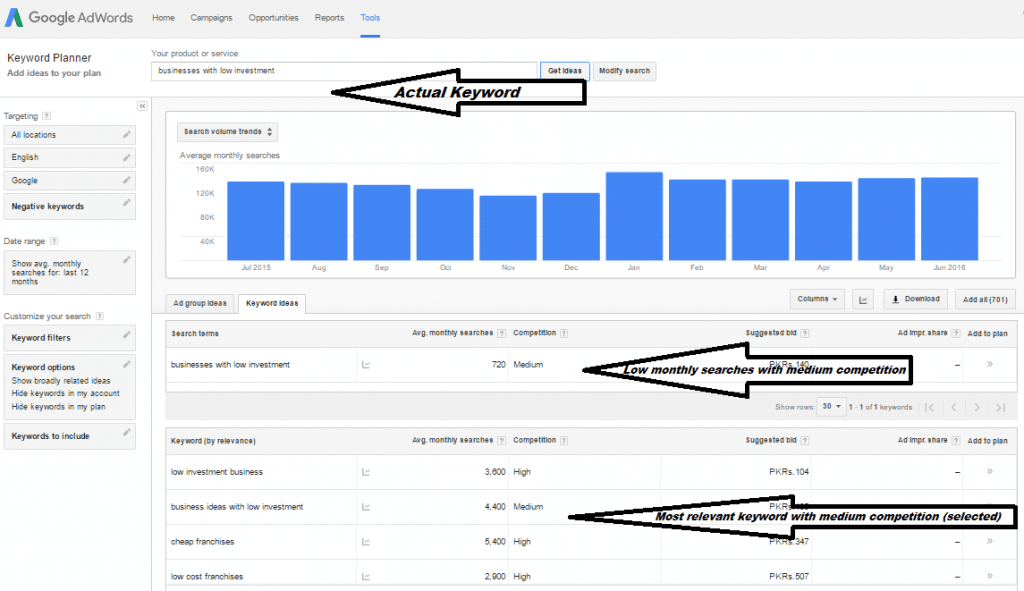
Google Keyword Planner also gives advantages of running the advertising campaign.
.
You can also get suggestion by typing on Google Search. Write half of the sentence and let Google suggest you different keywords.

- A keyword which contains 3 or 4 words and gives complete meaning is called Long Tail Keywords.
For example, Small Businesses Ideas With Low Investment is long tail keyword offering complete information. - Search engines prefer long tail keywords and easily recognize the concept of a post.
- Make sure that selected keyword is added in a suitable amount, not too less which makes a blog post under optimized and not too large which makes a blog post over optimized.
- The average density of Keyword is 1.5% to 2%. It means, if your post contains 1000 words, the keyword should be included around 15 to 20 times.
Tip: Excessive use of keyword will make a blog post over optimized. - Use of LSI (Latent Semantic Indexing) is good for SEO blog post. LSI is synonyms of primary keyword.
- LSI has two benefits: First search engine rank high post in which LSI uses and secondly keyword density remains under control.
Tip: Keyword must be added in the title, in each main heading, once or twice in subheadings (depending on the number of subheadings), introductory paragraph, the body of the blog post, and conclusion.
Title of Blog Post
Search engine always displays the title of the post in search results.
Write attention grabbing title for your blog post.
The title should be specific to the search query.
If the search query is about the process of uploading YouTube video, then your post title should be about how to upload YouTube video, rather than what is YouTube Video?
Titles start with interrogative pronouns like How, What, Who, and Why are most appealing titles.
These titles reflect direct questions toward the topic of the blog post. For example, Titles start with numbers also appeal readers.
A title must contain Keyword selected for the topic. For example, your topic is about making money online. The keyword is “Restaurant Marketing Ideas”. Title can be Top 10 Best Restaurant Marketing Ideas
Title length must be within 55-65 letters. Lengthy titles do not show complete in search results.
If the reader doesn’t see full title how can he know that this title contains information he is looking for?
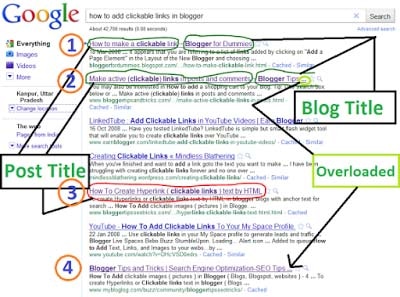
Draw Post Structure
Post topic decided research has been done, information has been collected, now draw your post structure.
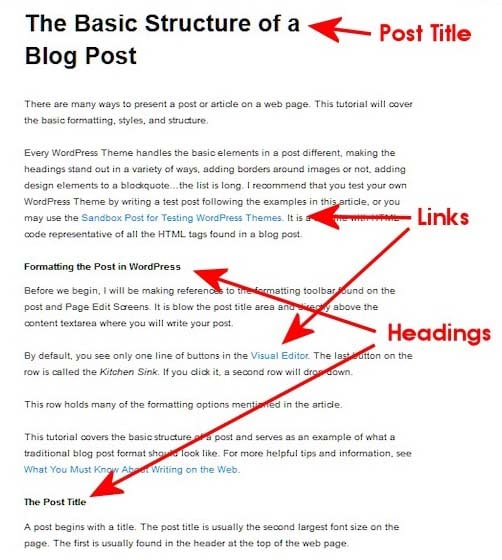
Three main part of post structure: Introduction, Body, and Conclusion.
Introduction
Don’t you want every single person clicked on one of your articles read it from start to end, unable to pull their eyes away from the screen?
Achieving this goal, you must write masterpiece introduction for your blog post.
The introduction is very critical part of any writing piece.
An introduction has one single purpose: to entice the reader to read the whole article.
If you fail at this, your readers won’t scroll down.
The introduction has complete information about the article. What is this post all about?
There are some ways to write introductory lines:
Ask a Question: This is an easy way to grab reader’s attention. Let them read the whole post to find out the answer to the question.
Tell a Story: Story creates reader interest. Find a story related to the topic.
Quote: Readers love inspirational quotes. Use inspirational quotes to start the blog post.
Facts and Figures: Share post related facts and figures.
The importance of Article: Explain the importance of the article. Everyone wants new information. What’s in it for me?
Body
The body contains each and every information about the title. Do research on the topic.
Express your thoughts, learning, and experience.
Write every possible information which you believe can be a good addition to reader’s knowledge.
Conclusion
Write final words on the topic in the section.
Related conclusion with the introduction. If you have asked the question, make sure you have answered till now.
If you have written story, make sure end of the story also has been told.
SEO friendly Blog Post needs readers’ involvement. Reader involvement expresses when reader comment on the post, argue with the writer or give the answer.
Ask one question at the end of every article to engage the reader and invite them to give their thoughts on the topic.
The more and more reader comments and shares post, the chances of appearance of the blog post on top searches will increase.
Use Headings (H1, H2, H3, H4)
Using headings is an awesome idea to engage the reader for the full article.
Always try to break the article into different paragraphs. Each paragraph should have an independent theme.
Heading increases the visibility of the post. Reader skips reading when he or she sees a lot of words without breaking and subheadings.
Subheadings give direction to readers what the whole the article is all about.

For making blog post SEO friendly, use H1, H2, H3, and so on. Search engine crawlers catch the words through headings.
H1, H2, H3… H6 have importance respectively.
Post title automatically selects as an H1 heading. Subheadings consider as H2 and minor headings consider h3.
The more subheadings in the blog post, the more chances are present to appear in search engine crawlers. Use selected keyword in subheadings.
Length of Article
Blog post length is the interesting topic to discuss. Everyone has the different opinion about it.
Let me tell you something. Do not prolong blog post without any reason and do not write the short post which ignores relevant information.
Write as per your topic demands. The article must contain 300 words at least.
Experts say that post having above 2000 words length have good readership but don’t forget 2 main aspects:
A reader read article 3-4 minutes on average. (For this purpose, make your post length around 1000 to 1500 words)
Bounce rate goes high when reader switches too quickly. (For this purpose, make your post length around 2000 to 2500 words)
 Yes, it is quite difficult to manage both aspects at the same time, that’s way I suggest that write blog post naturally.
Yes, it is quite difficult to manage both aspects at the same time, that’s way I suggest that write blog post naturally.
Do not prolong without any reason and do not ignore important information just to make your post short.
Proofreading
Every piece of writing needs proofreading. Proofreading is critical for every blog post.
I am damn sure, you don’t want to lose your readers.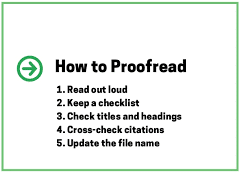
When readers open a link to read something, basically he is reading writer’s thoughts.
If he finds some mistake, grammatical, spelling or misleading facts and figures, he assumed writer as immature.
He will definitely not come back again. Proofread your content not once, not twice, even three times to get the best piece of writing.
Here are simple tips to proofread:
- Proofread next day of writing with the fresh mind. Maybe you got something new.
- Proofread structure of sentences, arrangements of paragraphs, grammatical and spelling mistakes.
- Use professional services of proofreading or let your friend proofreading your piece of writing. Everyone has different thoughts and style.
- Allow readers to point out mistakes if found. Appreciate their efforts and be sorry for it. This little effort will retain and engage your readers.
Writing an article is technical because you have to consider search engines as well.
Proper keyword research, keyword placement, technical sound titles and headings, appealing introduction and body, and proofreading are very critical for every blog post.
Which tip is most important in writing an SEO friendly blog post in your opinion? Share your thoughts with our readers.

